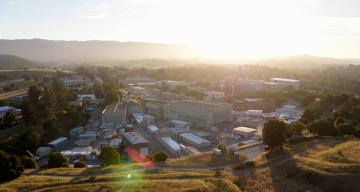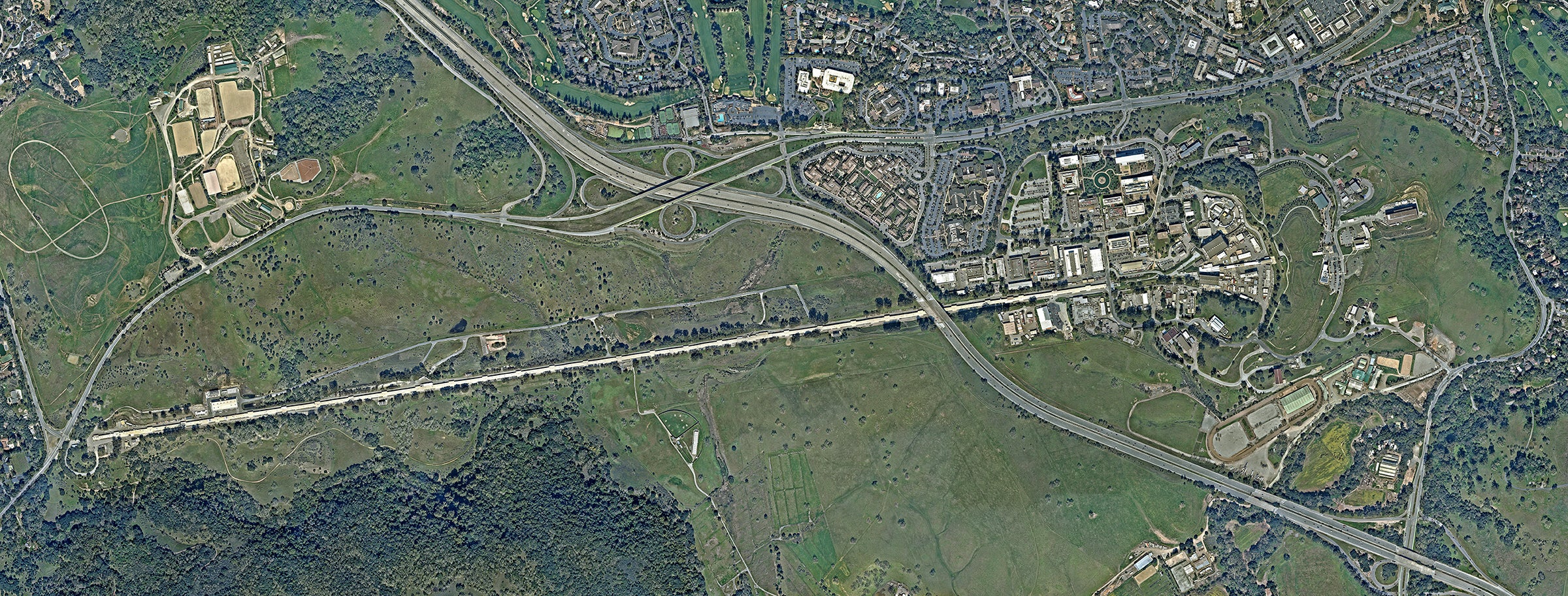We invite you to launch our interactive, self-paced tour or register for an on-site tour of SLAC. The tour destinations are designed to give you the most exciting and informative views of the lab. We are continuously adding on new stops and information about our sciences.
Pick your tour experience
Self-guided virtual tour
Explore some of our facilities and learn about our exciting research on this self-paced, interactive virtual tour.
Things to know:
- Follow the links on this page or launch the interactive tour for a more immersive experience.
- We have built this virtual platform around the locations featured on our in-person public tours, which are currently on pause due to COVID-19. We will be adding more facilities and SLAC sciences as we continue to develop the virtual tour program, so please check back for updates.
On-site tour with live guides
Join a free on-site tour with SLAC guides to see some of our facilities and learn about our science and research.
Things to know before registering:
- Tours are open to all visitors 12 years of age and above. Children 12 to 17 years of age must be accompanied by an adult; tickets are required for both the minor and the escorting adult.
- During registration visitors are required to review and agree to assume certain risks of participating in the tour, which are specified in a waiver for your signature. Waivers for children 12 years old and above must be signed by a parent or guardian.
- Tours involve walking and climbing stairs. If you require assistance or have accessibility concerns, please contact us in advance at tours@slac.stanford.edu.
- In order for SLAC to provide a safe environment for the public and our employees, no handbags or backpacks larger than 12"x6"x12" will be allowed on-site. Exceptions to this policy will be made for all medically necessary items after proper inspection from SLAC-badged staff.
- SLAC research is unclassified and photography is permitted; however, tripods are not allowed on tours.
- In rare cases, SLAC may need to cancel your tour. You will be notified of the cancellation as soon as possible using the email address you provided during registration.
Safety:
- All visitors must wear closed-toe shoes.
- SLAC is an active research laboratory. Please stay with the guide at all times and do not touch any scientific equipment unless instructed to do so by your guide.
- There are some areas at SLAC where personnel could potentially be exposed to low levels of radiation, which may pose risks to human health. However, those areas will not be included in your tour.
Transportation and directions:
- Directions to the main gate can be found here.
- When arriving at the main gate, please let security know you are here for a public tour and show them your valid government-issued photo ID.
- Security will direct you to visitor parking. The Orientation Theater is located in Building 53, Room 1010, to the right of the building entrance and past the elevators.
- Transportation around the SLAC site is via shuttle bus; you will return to your car only at the end of the tour.
Live tour for your classroom
Sign up for a free, guided in-person tour for groups of 10 to 25 visitors affiliated with schools or other educational institutions.
Things to know before registering:
SLAC National Accelerator Laboratory offers free educational tours (transportation not included). Tours last approximately 90 minutes, and tour locations may vary according to site availability and group interests.
Educational tours are offered Tuesday and Wednesday, 9 a.m. to 3 p.m., according to site availability and by registration only. Please read the following guidelines before requesting a tour, and fill out your request form at least 1-2 months in advance. Only one group will be accommodated per tour date; please reach out as early as possible to secure your spot.
We will use the email address provided on your request form to contact you if we are able to host your group. We apologize if we cannot accommodate your tour – we receive a high volume of visit requests and unfortunately are not able to host them all.
General:
- Tours are offered to school groups or groups affiliated with an educational institution only.
- Tours are offered to groups of 10 to 30 students.
- Tours are open to visitors 12 years of age and above. Children 12 to 17 years of age must be accompanied by an appropriate number of adults, and registration is required for all visitors.
- During registration, visitors should review and agree to assume certain risks of participating in the tour, which are specified in a waiver for your signature. Waivers for children under 18 years old must be signed by a parent or guardian.
- Groups are required to arrive in buses, rather than in private cars. Tour guides will be assigned to each bus while onsite.
- SLAC research is unclassified and photography is permitted; tripods, however, are not allowed on tours.
- Tours involve walking and climbing stairs. If anyone in your group requires assistance or has accessibility concerns, please contact us in advance at tours@slac.stanford.edu.
- SLAC tours are free and may only be used for education and public outreach purposes. They may not be offered by a third party as prizes or to make any profit.
- In rare cases, SLAC may need to cancel your tour. You will be notified of the cancellation as soon as possible using the email address you provided on your request form.
Safety:
- All visitors must wear closed-toe shoes.
- SLAC is an active research laboratory. Please stay with the guide at all times and do not touch any scientific equipment unless instructed to do so by your guide.
Transportation and directions:
- Directions to the main gate can be found here.
- All tour participants 18 or older must have valid government-issued photo IDs. When arriving at the main gate, please let security know you are here for a tour and show them your ID.
- Security will direct you to the visitor parking. Tours leave from the Orientation Theater in Building 53, Room 1010, to the right of the building entrance and past the elevators.
Tour stops
Tour stops, both virtual and in-person, have been selected for viewing and practical considerations, as some areas of our lab are restricted to the public. We are continuously adding on new stops and information about our sciences.
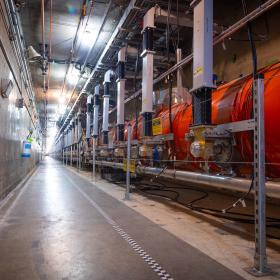
Linear accelerator
The linear accelerator (linac) is the longest modern building on Earth. The building above ground, nearly 2 miles long, houses klystrons that generate powerful microwaves. Below ground, these waves accelerate electrons to nearly the speed of light. Today the accelerator is divided into three sections that generate high-energy electrons for three facilities: the Linac Coherent Light Source (LCLS); LCLS-II, an upgrade to LCLS now under construction; and the Facility for Advanced Accelerator Experimental Tests (FACET-II).

Linac Coherent Light Source (LCLS)
The Linac Coherent Light Source (LCLS) is where the electron beam generates some of the world’s brightest X-ray laser pulses.
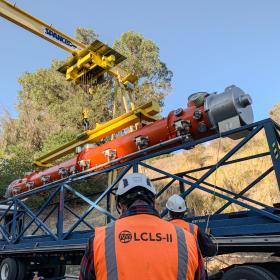
LCLS-II
The LCLS-II, an upgrade to LCLS, is now under construction. In this section, the original copper accelerator is being replaced by a new superconducting, niobium-based particle accelerator that will be cooled to almost absolute zero using liquid helium.
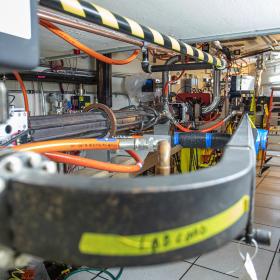
Facility for Advanced Accelerator Experimental Test (FACET-II)
The Facility for Advanced Accelerator Experimental Test (FACET-II) is where scientists test advanced acceleration technologies that could dramatically shrink particle accelerators.
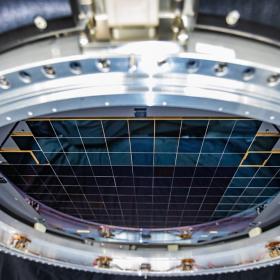
Legacy Survey of Space and Time (LSST) Camera
The Legacy Survey of Space and Time (LSST) Camera is a large camera for the next major galaxy survey. Scientists use the LSST Camera to study dark energy by looking at how the distribution of galaxies changes as we look farther out into the universe.
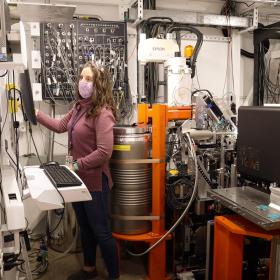
Stanford Synchrotron Radiation Lightsource (SSRL)
The Stanford Synchrotron Radiation Lightsource (SSRL) is an extremely bright X-ray light for probing our world at the atomic and molecular levels.
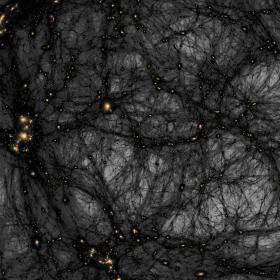
Kavli Institute for Particle Astrophysics and Cosmology (KIPAC)
The Kavli Institute for Particle Astrophysics and Cosmology (KIPAC), explores new fronts and challenges in astrophysics and cosmology.
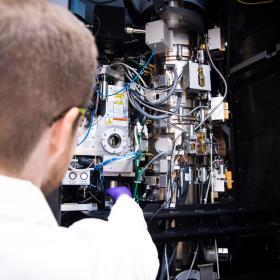
Cryogenic electron microscopy (Cryo-EM)
Cryogenic electron microscopy (cryo-EM) provides revolutionary tools to give scientists unprecedented views of the inner workings of the cell.
Visitor information
Virtual tour FAQs
The virtual tour is designed for those 12 years of age and above. Individuals 17 years old and younger are welcome, but a parent or a legal guardian must register for them and join the minor for the entire duration of the tour.
See our registration page for exact dates and times.
Please visit our registration page to sign up for a virtual tour.
The tour generally includes a visit to the lab’s 2-mile-long linear accelerator and to the X-ray laser facility now powered by it.
If you can’t make it to the tour you signed up for, please let us know as soon as possible so we can give your spot to someone on the waitlist. You can use your reservation confirmation email to access Eventbrite and cancel your reservation. If a tour has to be cancelled, we will inform participants by email.
Virtual tours are being offered via Zoom by registration only. A Zoom webinar link will be sent to all registered participants one day prior to the virtual tour. You may watch with those you registered for on your personal device, but please do not share the link with other family and friends.
Tour guides are SLAC employees, scientists and engineers.
Students affiliated with schools and higher education institutes can request a tour using the educational tour request form. We currently do not offer tours for other groups; please check back here periodically for updates.
In-person tour FAQs
SLAC tours are open to anyone 12 years of age and above, with registration. Children 12-17 years of age must be accompanied by an adult.
Tours last 90 minutes and are offered twice a month, usually on Fridays at 1 p.m. and 2:30 p.m. See our registration page for exact dates and times.
Please visit our registration page to sign up for a tour.
The tour generally includes a visit to the lab’s 2-mile long linear accelerator and to the X-ray laser facility now powered by it. Availability of these operational research facilities is subject to change and may influence tour locations.
If you can’t make it to the tour you signed up for, please let us know as soon as possible so we can give your spot to someone on the waitlist. You can use your reservation confirmation email to access Eventbrite and cancel your reservation. If a tour has to be cancelled, we will inform participants by email.
Please wear comfortable, closed-toe shoes and long pants.
You must have a valid government issued photo ID, such as a driver’s license or a passport.
Cameras can be brought on site and photography is permitted; however, we do not allow tripods on the tour.
Please follow directions to the main gate on our directions page. Please plan to arrive 15 minutes prior to tour time.
Tour guides are SLAC employees, scientists and engineers.
Students affiliated with schools and higher education institutes can request a tour using the educational tour request form. We currently do not offer tours for other groups; please check back here periodically for updates.
Tours involve walking and climbing stairs but can be adjusted to accommodate people with disabilities or people who require assistance. Please let us know in advance so we can make these adjustments, at tours@slac.stanford.edu.
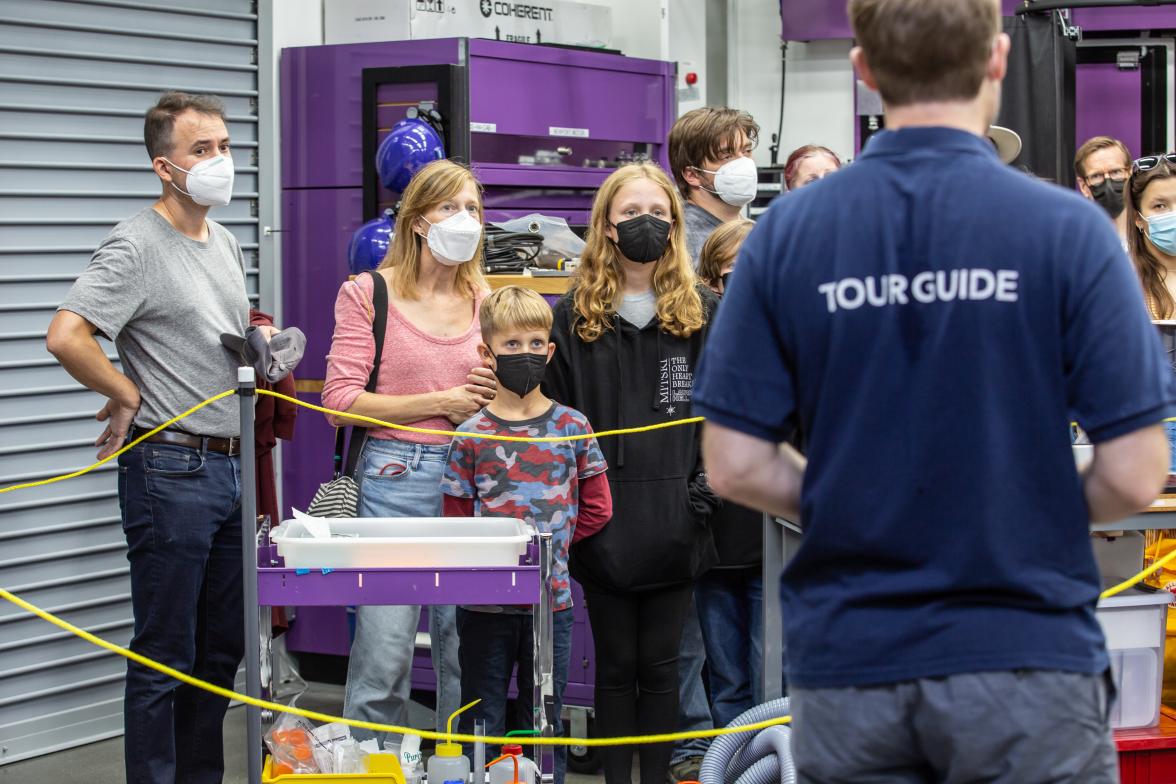
In-person tour guidelines
Public tour guidelines
- SLAC National Accelerator Laboratory offers free public tours.
- Tours last approximately 90 minutes and usually include a visit to the lab’s 2-mile-long linear accelerator, now driving the world’s brightest X-ray source.
- Tours are offered twice a month, by registration only.
- All public tours meet in the SLAC Orientation Theater (Room 1010), Building 53, 15 minutes prior to tour time. Closed-toed shoes are required.
- Tours are open to all visitors 12 years of age and above. Children 12-17 years of age must be accompanied by an adult; tickets are required for both the minor and the escorting adult.
